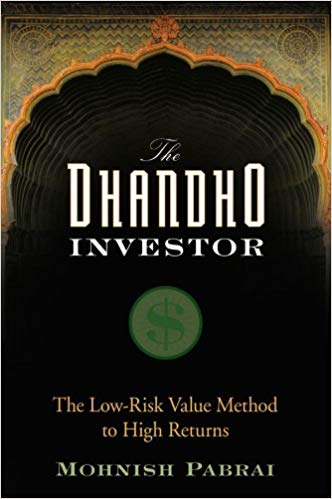Back in 2007, Mohnish Pabrai and his friend and fellow investor Guy Spier, paid $650,100 in a charity auction to have lunch with the billionaire, Warren Buffett.
Pabrai later said he’d used the occasion to thank Buffett personally for all that he’d learnt from him over many years. He said the three hours that he and Spier had spent with him in a Manhattan steakhouse had been “a terrific bargain”.
In many ways, the hunt for terrific bargains describes to a tee Pabrai’s investment strategy.
Mohnish Pabrai - a value-focused contrarian
Mohnish Pabrai is a popular figure on the US investing scene. After immigrating to the US from India in the 1980s he studied engineering and later worked in IT. From there he started his own business before selling it in 2000 for a reported $20 million.
These days he’s better known for running Pabrai Investments Funds, currently with $575 million under management, as well as a zero-fee investment firm called Dhando Funds. He’s also written the books The Dhandho Investor and Mosaic: Perspectives on Investing.

The charity lunch with Buffett was the culmination of several years in which Pabrai had honed his own investing framework. During that time he’d studied Buffett’s annual letters to shareholders of Berkshire Hathaway, and this influence on his thinking led him to adopt a contrarian strategy that combines value and quality.
In the Dhando Investor, Pabrai explains that the core of his strategy is based on the ideas that: “heads I win, tails I don’t lose much”. That means picking investments where there’s a wide margin of safety and the upside overwhelms the downside. More specifically, Pabrai - who often stresses the importance of using investment checklists - sets out a 9-point Dhando framework:
- Focus on buying an existing business (rather than backing start-ups or firms with unproven models)
- Buy simple businesses in industries with an ultra-slow rate of change (which are often unloved and potentially underpriced by the market)
- Buy distressed businesses in distressed industries (where the margin of safety may offer attractive value opportunities)
- Buy businesses with a durable competitive advantage (the very profitable moat-like strengths that Buffett is so fond of)
- Bet heavily when the odds are overwhelmingly in your favour (be patient and wait for Mr Market to serve up attractive investments)
- Focus on arbitrage (special situations…






